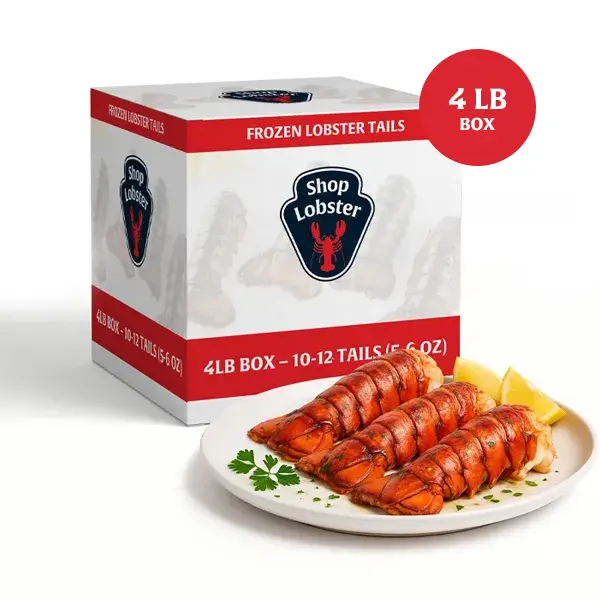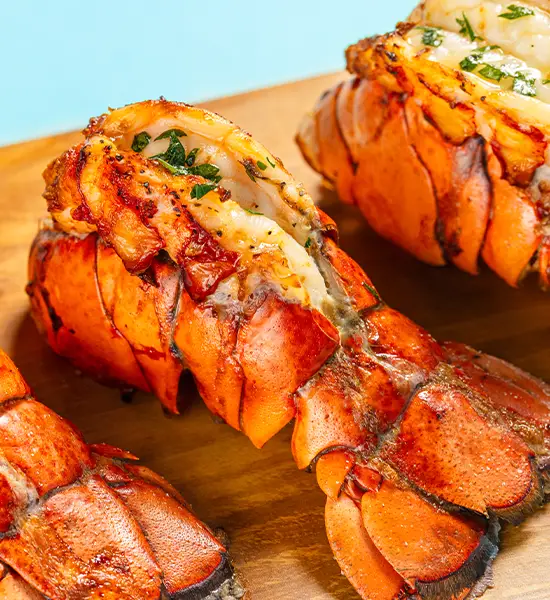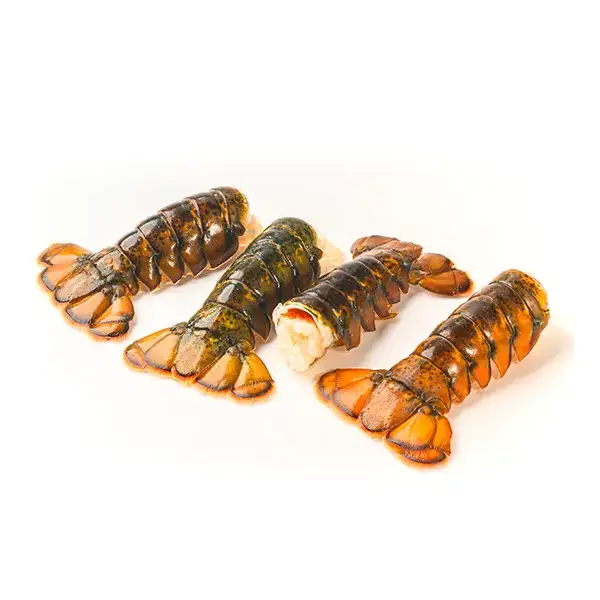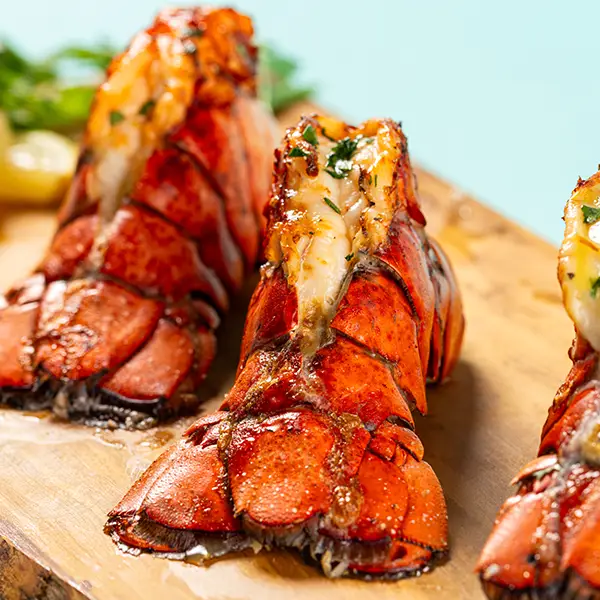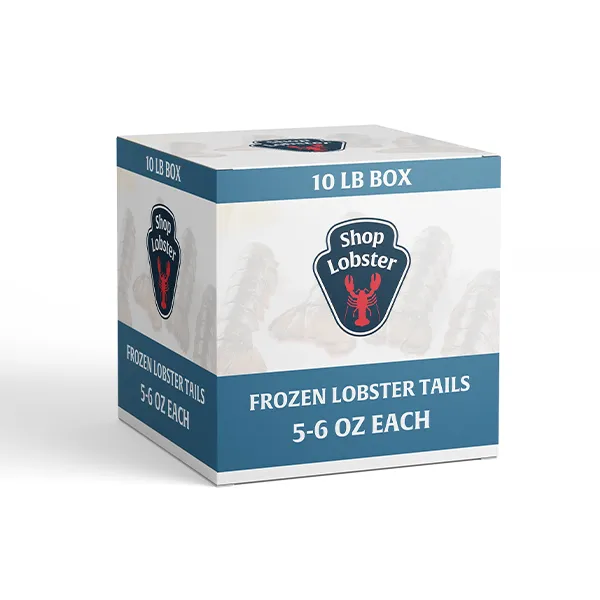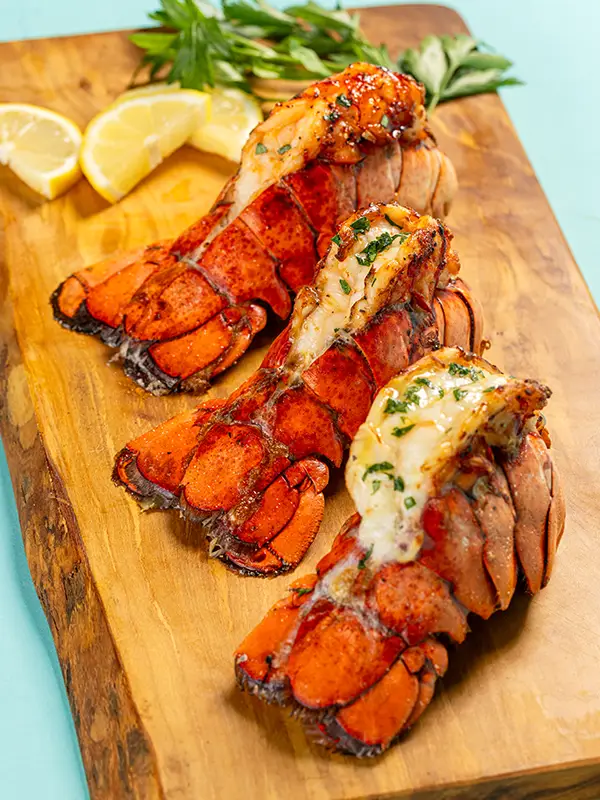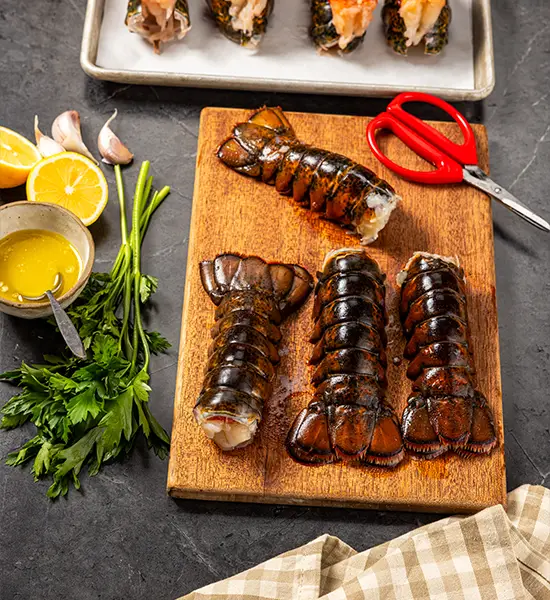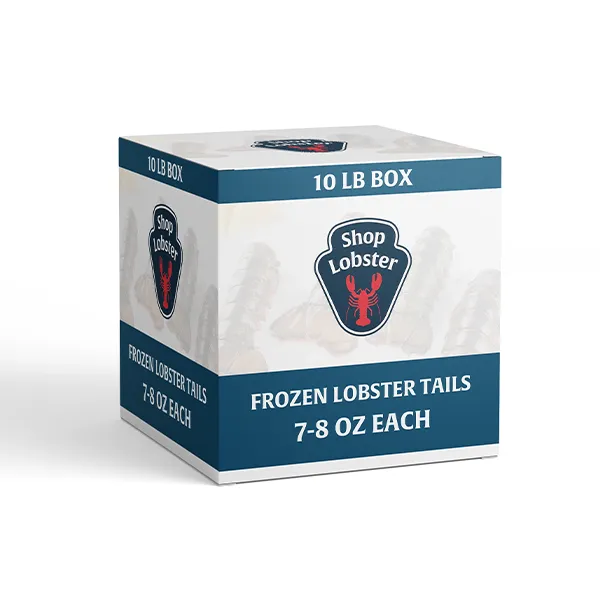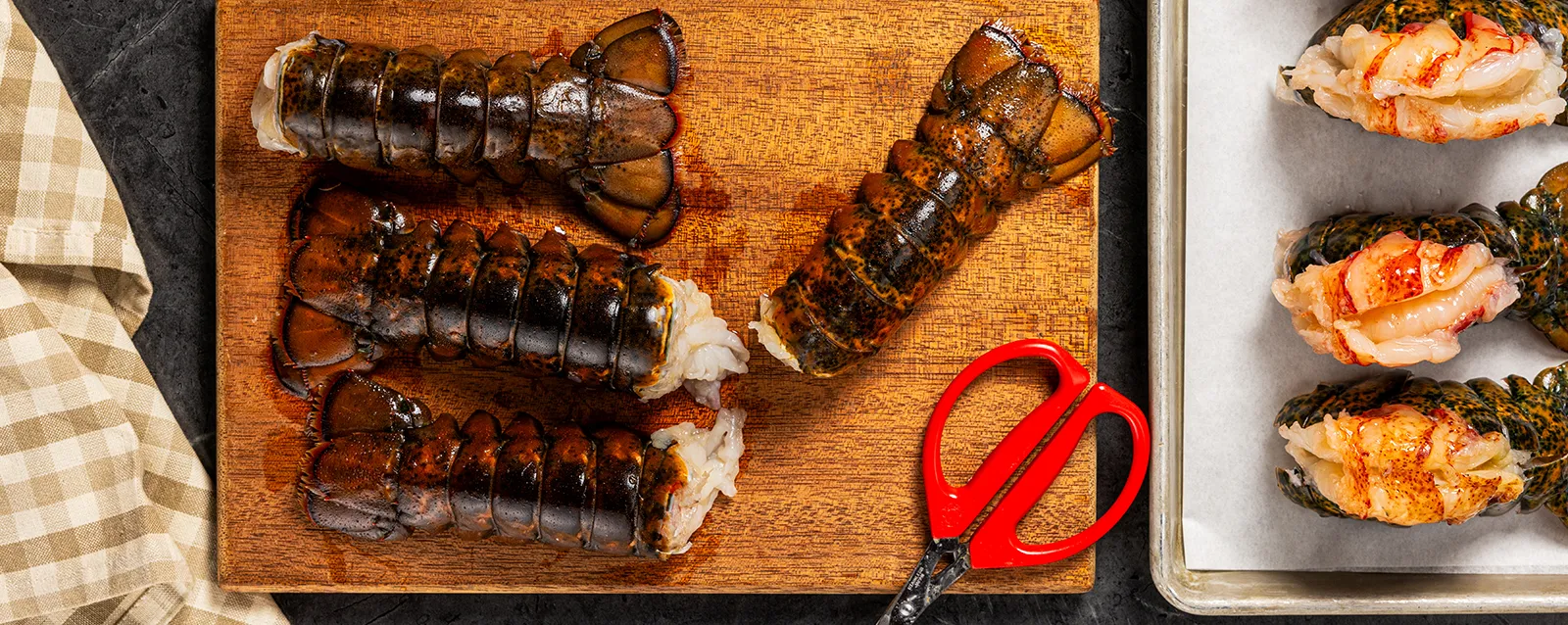
The Ultimate Guide to Cooking Frozen Lobster Tails: 5 Foolproof Methods for Restaurant-Quality Results
Looking for premium frozen lobster tails? Browse our Maine Lobster Tails Collection for 4–5 oz, 5–6 oz, 6-7 oz, and 8–10 oz boxes with free next-day delivery.
Scared of cooking frozen lobster tails at home? Don’t worry, you’re not alone. Almost 50% of our customers aren’t confident in their lobster tail cooking skills. But here’s the thing—cooking lobster isn’t just for fancy restaurants. With the right techniques, you can have buttery, tender lobster tails in your own kitchen.
I remember when I was a kid growing up in Maine helping my grandfather unload lobster traps on the dock. The salty ocean air, the sound of the waves slapping against the boat—it’s all still fresh in my memory. He used to say, “A lobster’s only as good as the hands that prepare it.” Back then we didn’t have fancy thermometers or online recipes—we just knew how to cook by feel. But today I’m here to make it easier for you.
In this guide I’ll show you everything you need to know to cook frozen lobster tails to perfection. From proper thawing techniques to 5 foolproof cooking methods—broiling, baking, grilling, boiling, and steaming—you’ll learn how to turn those tails into something amazing. And I’ll share expert tips on serving, pairing and making the most of your Maine lobster experience.
So grab your lobster tails, roll up your sleeves and let’s get cooking! If you don’t have lobster tails yet, check out our Frozen Maine Lobster Tails. We deliver anywhere in the USA with free next-day shipping.
4 lb Maine Lobster Tails Family Box – 10–12 Tails (5–6 oz each, Frozen)
Frozen Lobster Tails: 4 Pack (4-5 oz each, Frozen)
How to Properly Thaw Frozen Lobster Tails
Before cooking your lobster tails, proper thawing is essential for the best texture, flavor, and to prevent the meat from sticking to the shell.
Refrigerator Method (Recommended)
The slow-thaw refrigerator method is best for preserving the lobster’s delicate texture and flavor:
- Place in container: Put your frozen lobster tails in a leak-proof container to catch any liquid.
- Refrigerate overnight: Allow 24 hours for the tails to thaw completely in your refrigerator.
- Check for flexibility: Properly thawed tails should feel flexible when gently bent.
Quick-Thaw Method
If you’re short on time, you can use this faster method:
- Seal in waterproof bag: Place the frozen tails in a sealed plastic bag.
- Submerge in cold water: Place the bag in a bowl of cold water.
- Change water regularly: Replace the water every 15-30 minutes.
- Thaw time: Allow 30-60 minutes for smaller tails and up to 90 minutes for larger ones.
IMPORTANT: Never use warm or hot water to thaw lobster tails, as this can begin cooking the meat unevenly and affect texture. Also, avoid microwave thawing, which can partially cook and toughen the delicate meat.
Preparing Lobster Tails for Cooking
Once your lobster tails are properly thawed, follow these steps to prepare them for cooking:
Cleaning Lobster Tails
- Rinse thoroughly: Wash the tails under cold running water.
- Remove the vein: Using kitchen shears or a sharp knife, cut along the top of the shell and remove the dark vein (digestive tract) running through the tail meat.
Butterflying Lobster Tails (Recommended for Broiling, Baking, and Grilling)
This presentation method exposes the meat for even cooking and creates an impressive restaurant-style appearance:
- Cut the shell: Using kitchen shears, cut through the top of the shell lengthwise, starting from the thick end and stopping just before the tail fin.
- Expose the meat: Gently spread the shell apart and lift the meat slightly above the shell, keeping it attached at the tail fin.
- Rest on shell: Close the shell underneath so the meat rests on top of the shell.
PRO TIP: For an extra-special presentation, make a shallow cut along the top of the exposed meat and gently spread it open to create a “butterfly” effect that will cook more evenly.
5 Foolproof Methods for Cooking Lobster Tails
1. Broiling Lobster Tails
Broiling creates a delicious caramelized finish on the meat while keeping it tender and juicy.
Ingredients:
- Thawed lobster tails
- 2-3 tablespoons melted butter
- 1 teaspoon lemon juice
- ¼ teaspoon garlic powder
- Salt and pepper to taste
- Fresh herbs (optional: parsley, thyme, or chives)
Instructions:
- Preheat broiler: Set your oven’s broiler to high.
- Prepare lobster tails: Butterfly the tails as described above.
- Season: In a small bowl, mix melted butter, lemon juice, garlic powder, salt, and pepper. Brush this mixture generously over the exposed meat.
- Position: Place tails on a baking sheet, meat side up, about 4-5 inches from the heat source.
- Broil: Cook for approximately 1 minute per ounce of tail weight (e.g., 6-7 minutes for 6-7 oz tails).
- Check doneness: The meat should be opaque and white with no translucent (grayish) color. The internal temperature should reach 140-145°F.
PRO TIP: For extra flavor, add a sprinkle of paprika to the butter mixture for a beautiful color and subtle smoky flavor.
2. Baking Lobster Tails
Baking is a gentle, foolproof method that’s perfect for beginners and produces consistently tender results.
Ingredients:
- Thawed lobster tails
- 2-3 tablespoons melted butter
- 1 tablespoon lemon juice
- 1 teaspoon minced garlic
- Salt and pepper to taste
- ¼ cup white wine or seafood stock (optional)
Instructions:
- Preheat oven: Set to 375°F (190°C).
- Prepare lobster tails: Butterfly the tails as described above.
- Season: Mix melted butter, lemon juice, garlic, salt, and pepper. Brush over the exposed meat.
- Add liquid: Pour wine or stock into the baking dish (optional, creates steam for moisture).
- Bake: Place in a baking dish and cook for 12-15 minutes for 6-8 oz tails. Add 1-2 minutes for each additional ounce.
- Check doneness: The meat should be opaque and white with an internal temperature of 140-145°F.
PRO TIP: Cover the dish loosely with foil for the first 5-7 minutes to trap moisture, then remove for the remaining time to allow for some browning.
3. Grilling Lobster Tails
Grilling adds a wonderful smoky flavor that pairs perfectly with the sweet lobster meat.
Ingredients:
- Thawed lobster tails
- 2-3 tablespoons olive oil or melted butter
- 1 teaspoon lemon zest
- 1 clove minced garlic
- Salt and pepper to taste
- Fresh herbs (optional: parsley, thyme, or chives)
Instructions:
- Preheat grill: Heat to medium-high (375-400°F).
- Prepare lobster tails: Butterfly the tails as described above.
- Season: Mix olive oil or butter with lemon zest, garlic, salt, and pepper. Brush over the exposed meat.
- Grill meat side down first: Place tails meat-side down on the grill for 2-3 minutes to get grill marks and seal in flavor.
- Flip and finish: Turn tails over (shell-side down) and grill for an additional 5-7 minutes.
- Baste: Brush with additional butter mixture halfway through cooking.
- Check doneness: The meat should be opaque and white with an internal temperature of 140-145°F.
PRO TIP: For extra flavor, add soaked wood chips to your grill for a subtle smoky essence that complements the sweet lobster meat perfectly.
4. Boiling Lobster Tails
Boiling is the quickest method and excellent for maintaining the lobster’s natural flavor.
Ingredients:
- Thawed lobster tails
- Water
- 1 tablespoon salt per quart of water
- 1 lemon, halved (optional)
- 2-3 sprigs of fresh herbs (optional: thyme, parsley, or bay leaves)
Instructions:
- Prepare water: Fill a large pot with enough water to completely cover the tails. Add salt, lemon halves, and herbs if using.
- Bring to boil: Heat water to a rolling boil.
- Add tails: Carefully place the lobster tails in the boiling water.
- Reduce heat: Lower to a gentle boil.
- Cook: Boil for approximately 1 minute per ounce of tail weight (e.g., 6-7 minutes for 6-7 oz tails).
- Remove and cool slightly: Use tongs to transfer tails to a plate.
- Cut shells: Using kitchen shears, cut along the underside of the shell to access the meat.
PRO TIP: For extra flavor, replace some of the water with seafood stock or add Old Bay seasoning to the boiling water.
5. Steaming Lobster Tails
Steaming preserves the lobster’s natural flavor and produces exceptionally tender meat.
Ingredients:
- Thawed lobster tails
- Water
- 1 tablespoon salt
- 1 lemon, sliced (optional)
- Fresh herbs (optional: thyme, parsley, or bay leaves)
Instructions:
- Prepare steamer: Fill a large pot with 1-2 inches of water. Add salt, lemon slices, and herbs if using.
- Set up steamer: Place a steamer basket or rack above the water level.
- Bring to boil: Heat water to a rolling boil.
- Add tails: Place lobster tails in the steamer basket.
- Cover and steam: Cook for approximately 1.5 minutes per ounce of tail weight (e.g., 9-10 minutes for 6-7 oz tails).
- Check doneness: The meat should be opaque and white with an internal temperature of 140-145°F.
PRO TIP: For an Asian-inspired twist, add ginger slices and lemongrass to the steaming water
Enter your lobster tail size to get the exact cook time for broiling, baking, grilling, boiling, or steaming. Then start a built-in timer.
Lobster Tail Cook Time & Timer
Cooking whole lobsters instead of tails? Here’s the complete step-by-step guide: How to Cook a Live Maine Lobster
Shop Lobster Tails:
4 lb Maine Lobster Tails Family Box – 10–12 Tails (5–6 oz each, Frozen)
Frozen Lobster Tails: 4 Pack (4-5 oz each, Frozen)
Lobster Tail Cooking Time Chart
For perfectly cooked lobster tails every time, use this handy cooking time chart based on tail weight:
| Tail Weight | Broilling | Baking | Grilling | Boiling | Steaming |
|---|---|---|---|---|---|
| 4-5 oz lobster tails | 4-5 min | 10-12 min | 6-8 min | 4-5 min | 6-7 min |
| 5-6 oz lobster tails | 6-7 min | 12-14 min | 8-10 min | 6-7 min | 9-10 min |
| 7-10 oz | 8-10 min | 14-16 min | 10-12 min | 8-10 min | 12-15 min |
| 10-14 oz | 12-14 min | 16-18 min | 12-15 min | 12-14 min | 18-20 min |
IMPORTANT: Cooking times are approximate. Always check for doneness by looking for opaque, white meat and an internal temperature of 140-145°F.
How to Tell When Lobster Tails Are Done
Perfectly cooked lobster meat should be:
- Opaque and white: No translucent or grayish areas
- Firm but tender: Should offer some resistance when pierced with a fork, but not be rubbery
- Proper temperature: Internal temperature of 140-145°F
- Shell color: The shell should turn bright red
PRO TIP: If you don’t have a meat thermometer, check doneness by cutting into the thickest part of the tail. The meat should be opaque all the way through with no translucent areas.
Common Mistakes to Avoid When Cooking Maine Lobster Tails
- Skipping proper thawing: Always thaw completely for even cooking and to prevent meat from sticking to the shell.
- Overcooking: This is the most common mistake! Overcooked lobster becomes tough and rubbery.
- Undercooking: Undercooked lobster has a translucent appearance and gelatinous texture.
- Not removing the vein: The digestive tract should be removed for the best flavor and presentation.
- Using too high heat: Gentle cooking preserves the delicate texture of lobster meat.
Serving Suggestions and Pairings
Classic Accompaniments
- Drawn butter: The traditional accompaniment, simply melt butter and clarify if desired.
- Lemon wedges: A squeeze of fresh lemon brightens the lobster’s flavor.
- Fresh herbs: Chopped parsley, chives, or dill add color and freshness.
Side Dish Pairings
- Starches: Risotto, mashed potatoes, or crusty bread
- Vegetables: Asparagus, green beans, or corn on the cob
- Salads: Light green salad with vinaigrette or coleslaw
Wine Pairings
- White wines: Chardonnay, Sauvignon Blanc, or Pinot Grigio
- Sparkling: Champagne or Prosecco
- Rosé: Dry rosé wines complement lobster beautifully
Why Choose ShopLobster for Your Lobster Tails?
At ShopLobster, we’re committed to providing the Premium Maine lobster tails delivered directly to your door. Our lobster tails are:
- Sustainably harvested from the cold, clean waters of Maine
- Flash-frozen at peak freshness to preserve flavor and texture
- Available in various sizes to suit any occasion
- Shipped with care to ensure they arrive in perfect condition
Frequently Asked Questions About Cooking Lobster Tails
You can cook lobster tails straight from the freezer, but it’s not ideal. For the best flavor and texture, thaw them in the fridge overnight or in cold water for 30–60 minutes. If you’re cooking from frozen, add about 50% more cooking time and check for doneness carefully.
The green substance (tomalley) is the lobster’s liver, while the black material is part of the digestive tract or roe. Both are safe to eat but are typically removed for aesthetic reasons and optimal flavor.
Store leftover cooked lobster meat in an airtight container in the refrigerator for up to 2 days. Use in cold preparations like lobster rolls or salads rather than reheating, which can toughen the meat.
Each method has its advantages:
– Broiling: Best for caramelization and flavor
– Baking: Most foolproof for beginners
– Grilling: Best for smoky flavor
– Boiling: Quickest method
– Steaming: Best for preserving natural flavor and tenderness
A good rule: cook for about 1 minute per ounce. So if your tail is 6 oz, it’ll take around 6 minutes (depending on the method).
Check with a thermometer — the sweet spot is 140–145°F.
Cut down the top of the shell with kitchen shears (don’t cut through the bottom). Gently pull apart the shell and lift the meat out to sit on top of the shell. This lets it cook evenly and gives you that classic “restaurant look.”
That usually means it wasn’t thawed properly. Frozen meat that goes straight into heat tends to glue itself to the shell. To avoid this, thaw the tails completely before cooking.
Absolutely. A mix of melted butter, lemon juice, garlic, salt, and a pinch of paprika is a classic combo. You can also add herbs like parsley or thyme for a fresh finish.
Look for opaque white meat with no gray or translucent areas. The shell should be bright red. If you want to be sure, use a thermometer — 140–145°F is perfect.
Classic sides include garlic butter, lemon wedges, baked potatoes, grilled asparagus, or a crisp salad. For something fancy, try risotto or a creamy pasta.
Ready to Experience the Best Frozen Lobster Tails?
Don’t miss our popular promotions, including our customer-favorite “4lb Lobster Tails Box – Family Pack”.

LIVE MAINE LOBSTER
The ultimate fresh seafood experience, sustainably harvested and delivered overnight.
SHOP LIVE LOBSTER
FROZEN LOBSTER TAILS
Premium tails flash-frozen to preserve flavor and texture. Perfect for special occasions.

BEST LOBSTER MEAT
Ready-to-use claw, knuckle, and tail meat for effortless gourmet meals.

